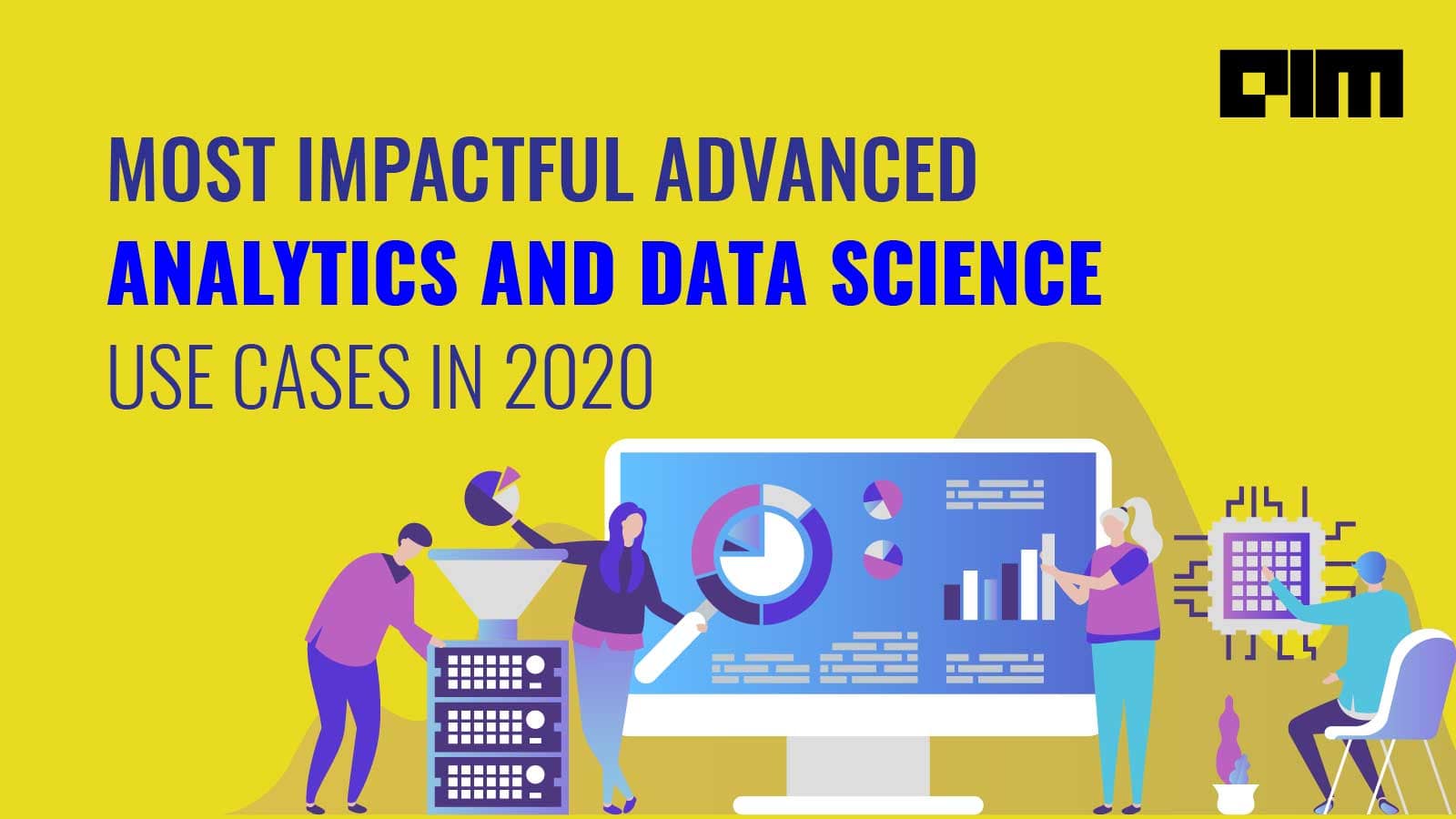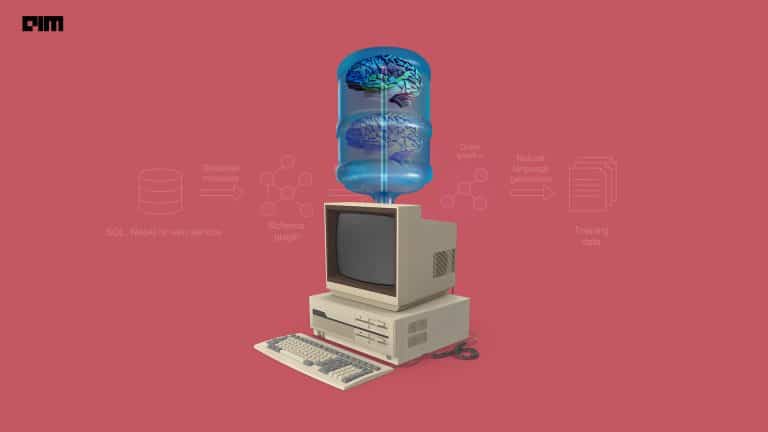The ongoing pandemic has changed our experiences forever — as employees, citizens and customers. While the unrelenting pandemic continues to roll on, the future is not going to be the same. There have been a lot of changes in the last few months in consumer preferences and subsequently business functioning. Businesses are witnessing altered consumer buying patterns, nudging them to re-evaluate how they can deliver relevant customer experience to support business continuity.
One of the most significant changes have been a significant focus on digital acceleration. Companies are relying on robust digital strategies to capture new marketplace opportunities and digital customer segments. There has also been a reattribution of marketing spends and marketing mix to tap new opportunities. For the push towards a digital future, data science and analytics are playing a crucial role.
Analytics India Magazine brings a list of few such data science use cases that have been relevant for the year 2020. The list includes a detailed note on the project in terms of business problem solved, how were analytics and data science used, why is it relevant now and the impact that it created for the company and the data science teams as a whole.
Project: Customer sentiment analysis to build customer-centric products by Ugam, a Merkle company
Business problem solved: Helping a leading US omnichannel retailer grow its private label business and compete better across a large number of categories.
Why relevant now: The rise of digital is changing consumer behaviour. In addition, stiff competition and margin pressures across a large number of categories have aggravated the need to understand consumer needs better.
Approach and technologies leveraged: Using a combination of machine learning algorithms and human expertise, Ugam analysed customer sentiments across various data sources. These data sources include product reviews on the retailer’s website, product reviews from competitor websites, internal sales data, and so on. Then, leveraging natural language processing (NLP), data scientists at Ugam extracted keyword phrases from customer reviews, grouped them into themes and classified them as positive or negative customer sentiments. These outputs were then validated, basis which the retailer was provided with specific recommendations such as improving operational effectiveness, adding better quality components, ensuring easy installation, etc. for in-demand products. These recommendations helped improve overall product quality and make informed decisions around its marketing.
Impact: An easy-to-use framework that identifies a customer wish list of product attributes to build customer-centric products. In addition, the retailer benefited from a significant decrease in product return rates.
“Working on this project gave exposure to an extensive NLP use case and also understanding how customer sentiment analysis can be done to bring about the best experience for them. We got to work an excellent team to bring this use case to life,” said a data scientist at Ugam who worked on the project.
Project: Next Best Action (NBA) to rank-order top three products at customer-level from a bouquet of a large number of financial products and services by HDFC Bank
Business problem solved: Apart from product-level propensities that HDFC Bank already had, the goal was to identify the order of importance for customer-level products that orchestrates not just the propensities, but also the intent captured through campaign responses, digital footprints and web behaviour.
Why relevant now: The pandemic has forced constraints on the demand side as well as the supply side. The need to be relevant during these times can’t be underscored enough. As the size of the opportunity reduces, there is even more need for data to sharpen the target market. This cuts both ways – including customers for whom the offering will be relevant and excluding those where it will be irrelevant, and more importantly, refining the basket of offers by identifying the order of importance.
Approach and technologies leveraged: Earlier propensity scores for various products were utilised based on customer’s transactions and demographics for cross-selling. To this, the digital footprint was overlaid, and feedback from various channels was taken to identify customer-level intent. Additionally, they employed a prescriptive framework to empower frontline channels with insights on customer’s behaviour and possible interventions. The NBA model was developed leveraging open-source technologies like Python (32 core/512 GB RAM on-premise server for data processing) and PostgreSQL (16 core /50 TB DB server for data storage and provisioning). They also used advanced AI-based analytics platforms to handle big data, Natural Language Programming (NLP) to listen to verbatim feedback, ML algorithms for sharper recommendations, among others.
Impact delivered: This is the first of its kind solution in the Indian Banking space. Using this, non-relevant communication was pruned to 30%, while achieving a significant increase in engagement rates.
“Developing a flexible, AI-based recommendation solution, adaptable to the COVID-induced rapidly changing market scenario, was quite challenging. We consciously took a call to shift from the prevalent black-box algorithmic approach to an explainable AI framework. Personally, the project was quite enriching for me,” said Krit Doshi, Data Scientist, HDFC Bank.
“Data saves the day at HDFC Bank. We understood our audience previously, but 2020 is different. To adapt to the change, we built additional arbitration layers over individual propensities, to orchestrate the feedback captured across customer’s touchpoints –and accordingly recommend the right products in order of importance,” said Sahil Aneja, Data Scientist, HDFC Bank.
Project: Equitable multi-touch attribution model for revenue distribution by Ugam, a Merkle company
Business problem solved: Helping a Fortune 500 bank measure and understand the contribution of various channels towards their inbound marketing ROI.
Why relevant now: Several businesses are leveraging omnichannel marketing to drive seamless and great customer experiences, even more so during COVID-19. In doing so, there is a need to validate and optimise the marketing mix by measuring the overall contribution of each channel, creatives, etc. to ROI.
Approach and technologies leveraged: Ugam leveraged Python for data ingestion, cleaning, preparation and processing. Further, it relied on Apache Hive on Cloudera Distributed Hadoop (CDH) and Microsoft Power BI for storage and data visualisation respectively. Post data preparation, the touch-sequence for each converted customer was processed using a Shapley-value based MTA model. This enabled a comparison of test and control channel performance in terms of response rate, revenue per responder and incremental revenue obtained. The company also built a dashboard to convey the findings effectively, after which the process was set for automated delivery on a monthly cadence.
Impact: It created accurate, automated insights on the true contribution and performance of the various channels and marketing tactics, which allowed in-flight tuning for optimal results.
“The experience of working in tandem with the analytics and business teams of such a large financial institution was extremely rewarding. As always, this company ensures a continuous learning environment, and this was no new. Distilling a complex scenario into an elegant solution presented learning opportunities, especially in the areas of query optimisation and algorithm building,” said a data scientist at Ugam.
Project: Infrastructure as Code (IaC) by Ugam, a Merkle company
Business problem solved: Enable a leading non-profit organisation to deploy scale while overcoming the need for manual infra setup, by automating the process and controlling inconsistencies across the environmental installation.
Why relevant now: Businesses need infrastructure that can be deployed quickly and at scale. IaC is a relatively old technique, but it has gained importance in the modern cloud era. While the infrastructure can be set up with the click of a button, IaC also eases the process of setting up infrastructure as appropriate to the application, by passing configuration instructions to a cloud platform.
Approach and technologies leveraged: Ugam used AWS CloudFormation templates, Troposphere, Bitbucket Pipeline, AWS S3, RDS Postgres, Redshift, IICS (Informatica Intelligent Cloud Services), AWS Lambda, SQS, SNS, Cloudwatch, among others. They further developed an IaC pipeline code using BitbucketPipeline. They also used the troposphere Python library to create AWS CloudFormation templates which simplifies provisioning and management on AWS. The data science team at Ugam further created templates for Infrastructure resources and applications for quick and reliable provisioning, called stacks. These stacks could be easily updated or replicated as needed.
Impact delivered to client: Through automation, streamlined the Environmental Drift in the release pipeline along with a quick and efficient way of Infrastructure provisioning.
Project: COVID-19 Forecasting – Employee Risk Assessment by Genpact
Business problem solved: Generating accurate forecasts to help sustain business operations in the wake of the COVID-19 pandemic.
Why relevant now: In the latter half of 2020, businesses need to focus on identifying ways to improve the efficiency of their production and distribution operations. An important part of this process comes in the form of ensuring worker and employee safety. Businesses might have to identify strategies such as a reduction in shift timings, drop in the pace of operations or dedicating workforces to a single line of operations, to help manage the crisis.
Approach and technologies leveraged: It included three main steps — building the SIDR model (Susceptible-Infected-Dead-Recovered) using TensorFlow, quantifying interventions and minimising errors using machine learning. Genpact leveraged an epidemiological model to construct the actual progression of infectious diseases for each manufacturing location. In addition, the impact of intervention measures such as lockdown and social distancing was dynamically accommodated in the model building. They leveraged the client’s existing data along with data from external data sources, global trend data and lead indicators to provide better business intelligence recommendations based on forecasts.
Impact delivered: The solution allowed the client to conduct a rapid assessment of their current business state along with forecasting and scenario planning capabilities. The client was able to generate manufacturing site projections for cases and deaths, along with the impact of various strategies, such as lowering production outputs/shutting down facilities. Based on the forecasts, the client deployed the right safety strategies for each manufacturing location and witnessed a steady decline in the number of new cases arising within the company.
“COVID-19 has shattered all forecasting models. No one is going to be able to create perfect forecasts right now. But companies that incorporate external signals into their modelling and harness the power of artificial intelligence will definitely come out ahead,” said Sanjay Sehgal, U.S. Commercial Line of Business Consulting Leader, KPMG LLP.
Wrapping Up
These use cases suggest that data analytics is playing a crucial role for companies to overcome the challenges faced by the unfortunate COVID while enabling them with customer acquisition, building customer-centric products and accelerating digital transformation. Even after the impact of COVID-19 slows down, we are going to see more and more organisations veering towards advanced analytics and data science to bring about business transformations.


















































































